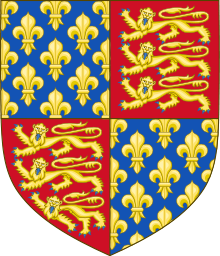A Review – RECOLLECTIONS: The Memoirs of Victoria Milford Haven
A Review – RECOLLECTIONS: The Memoirs of Victoria Milford Haven
“Recollections” – Victoria, Marchioness of Milford Haven, formerly Princess Louis of Battenberg.” Annotated and expanded by Arturo E. Beéche & Ilana D. Miller. (Eurohistory.com), 270 pages, illustrated throughout.
Victoria Milford Haven will be very familiar to our reader as the maternal grandmother of Prince Philip, the Duke of Edinburgh. The eldest daughter of Princess Alice of Great Britain and Grand Duke Ludwig IV of Hesse, she and her siblings Ella, Irene, Alix and Ernie grew up under the eye of their grandmother Queen Victoria after their mother’s tragic death in 1878. Tragedy was never far behind for the Hesse family, Victoria also losing two of her siblings, Frittie and May, in childhood.
These memoirs, written for her children and grandchildren for private publication, have now been made available to everyone, not just the few lucky historians who were fortunate enough to be able to consult them in the archives. They cover the years 1863 to 1914, Victoria not wishing to go further and cover the tragedies beyond, which she realised her family would know only too well anyway. She expressed herself bored with the whole process and credits Baroness Sophie Buxhoeveden (lady-in-waiting and close friend of her sister Empress Alexandra) for keeping her up to the mark. Thank goodness the Baroness did!
An introduction by the editors gives a resumé of the Princess’s life up to the outbreak of war in 1914, giving a greater understanding of the people and things that Victoria glosses over (or omits altogether). Then we come to the actual memoirs. Victoria comes over as very independent, pragmatic, a convinced socialist and, in her younger days a tomboy, in stark contrast to her sister Ella to whom she remained close.
“My mother’s death was an irreparable loss to us all and left a great gap in our lives,” she wrote in something of an understatement. The children then came under the watchful eye of Queen Victoria and were also fond of their Uncle Leopold, the Duke of Albany. Later, there is a touching sketch of Queen Victoria’s character, outlining what the Queen meant to Victoria Milford Haven.
Although Queen Victoria did not frown on the Battenbergs, the issue of a morganatic marriage, it is a little surprising to learn that at first ,she was not pleased about Victoria’s engagement to Prince Louis, even though he had spent a large part of his life in England and was serving in the Royal Navy. She probably would have opposed it more had she known that the wedding would lead to her daughter Beatrice’s marriage to Louis’s brother! Louis and Victoria lived for large parts of the time in Malta, and it was interesting to read about the life of a naval wife on the island.
I loved the account of kangaroos, ostrich, and a zebra kept at Frogmore (who knew!) and the short account of the drawbacks of steam driver motor cars (I wonder what she would have made of electric ones).
With two sisters married in Russia (Ella to Grand Duke Sergei Alexandrovich and Alix to Tsar Nicholas II), trips to that country figure largely. There is an account of the 1896 coronation and the tragedy of Khodynka which followed, Sergei’s assassination in 1905 and his funeral (and a photograph of what was left of his carriage after the bomb explosion), visits to Ella’s Moscow convent and, more fully, the journey she and her daughter Louise made in 1914. This included trips to Perm and Ekaterinburg, both of which would form places of confinement for members of the Romanov family and would figure largely in the tragedies to come. The trip was curtailed hurriedly on the outbreak of war, Victoria leaving her jewels in Russia for safekeeping. She never saw Ella and Alix (or her jewels) again. On the way back to England they saw the Dowager Empress and her daughter on the border between Finland and Sweden and here Victoria makes a mistake. The daughter was Xenia, not Olga.
Victoria mistakes the odd name or date, and these errors are expertly corrected in footnotes by the editors, who give full explanations of events which are only glossed over in the memoirs. They also have identified people who Victoria’s family would have known well, but we are less familiar with.
An epilogue brings the story up to date as the tragedies unfold – the murders of Ella, Alix and the latter’s husband and family in Russia, the death of her brother Ernie followed by that of his elder son and family in the Hesse air crash of 1937, the death of Louis in 1921, and of her elder son Georgie.
Throughout all this, Victoria Milford Haven kept going and, as the editors point out, she always did her duty.
The hundreds of photographs, as always in Eurohistory books, are excellent and mostly sourced from the vast Eurohistory collection. I particularly like the one of Prince Franz Joseph of Battenberg’s wife Anna of Montenegro in her ‘bright red little motor car.’
The result is a gorgeous book which gives us an insider’s account of life inside the royal family, from the court of Hesse to the court of Queen Victoria and beyond.
Coryne Hall
–//–
Clients can purchase their copy at our website at http://eurohistory.com or they can purchase the book on AMAZON !
To purchase at EUROHISTORY:
Purchase RECOLLECTIONS at Eurohistory.com
To Purchase on AMAZON:
Purchase RECOLLECTIONS on AMAZON
Expanded and annotated by Ilana D. Miller and Arturo E. Beéche the book contains the memoirs of one of the most intriguing and exceptional granddaughters of Queen Victoria: Victoria, Dowager Marchioness of Milford Haven.
Copies being autographed by Mr. Beéche
Packages leaving!
You can also print the order form below and send to us:
EUROHISTORY
6300 Kensington Avenue
East Richmond Heights, CA 94805
USA
Phone: 510.236.1730
Email: books@eurohistory.com / eurohistory@comcast.net / aebeeche@mac.com
http://www.eurohistory.com

























